Hindus will never hear from Christian leaders a sincere confession of wrongdoing. What Hindus will hear and see are more spurious histories of St. Thomas and charges of “deicide” by motivated faith writers like Ponnu Elizabeth Mathew and unscrupulous newspaper editors like Aditya Sinha and Manoj Kumar Sonthalia.” – Ishwar Sharan
Sixty years after Independence, a great newspaper, The New Indian Express, lies dying in Mount Road, brought low by unprincipled editors and an indifferent owner.[1] The editors believe that cultivating religious superstitions and caste prejudice will raise readership and save their power positions. They are unscrupulous, no different than the criminal and communal politicians who sit in our Indian legislatures. But Aditya Sinha and Manoj Kumar Sonthalia, try as they might, have lost the race for subscriptions.
Informed readers of The New Indian Express have left the drab broadsheet for the more enlightened and interesting Deccan Chronicle. Still, Sinha and Sonthalia clutch at straws to maintain a presence in Madras, publishing Catholic propaganda to appease a minority readership and keep missionary travel writers employed. The result is that at least one incensed reader and senior journalist, B. R. Haran, has dubbed the paper the “Evangelical Express”. Ramnath Goenka, great freedom fighter and founder of The Indian Express, must be turning somersaults in heaven!
The tourist feature at issue here is a top-of-the-page, in-your-face piece of “historical” travel writing by Ponnu Elizabeth Mathew called “Where faith resides/The story of faith and courage/The story of a slain apostle/The story of St. Thomas Mount”. It appeared on 20 August 2007, in the Chennai edition of The New Indian Express. It was the usual sentimental story about St. Thomas in Chennai and focused on a description of the 16th Century Portuguese church at the top of Big Mount, called St. Thomas Mount.
The church is built on the foundations of a Hindu temple, though Ponnu Elizabeth Mathew neglected to mention this fact. The church contains on its altar reredos a famous “bleeding” stone cross said to have been carved by St. Thomas. That St. Thomas has never been described anywhere as a stone cutter seems to have escaped the writer’s notice, as does the old Palhavi inscription on the carving’s border which identifies it to be of Persian origin. It has been dated to the 8th Century by experts, as have other “St. Thomas” crosses found in Kerala churches. Crosses were not used by Christians to identify their religion until long after the Council of Nicea in the 4th Century, probably not until the 7th Century.
Another item of interest the article brought to the reader’s attention is the icon of the Virgin Mary, allegedly painted by St. Luke and brought to India by St. Thomas. There are seven of these icons by “St. Luke” distributed around the world, the most famous one being in Santa Maria Maggiore Basilica at Rome. All of them are medieval productions, and the idea that they could be associated with either St. Luke or St. Thomas is absurd. Both 1st Century apostles were practising Jews and fierce iconoclasts. The cult of the Virgin Mary, like the cult of the cross, is a late development in the evolution of Christian religion. The protagonists of the St. Thomas tale always forget to put all the accoutrements and accretions of the apostle’s Portuguese legend into a 1st century context.
All these pious items of fable and romance would be of no account except that the legend carries at it heart a vicious communal tale of harassment and murder. St. Thomas, according to Ponnu Elizabeth Mathew, “…lived in hiding [at Little Mount] before he was slain by Raja Mahadevan, the leader on Mylapore, [on Big Mount].” Other versions of the Portuguese fable target Brahmins as the assassins of the apostle. The charge is false and deeply offensive to Hindus, and this has been brought to the attention of The New Indian Express editors years ago, when they were challenged about other stories of St. Thomas they had published and presented to readers as Indian history. On 29 June 2004, we wrote to the editor as follows:
“The allegation that St. Thomas converted a Mylapore king to Christianity and was then murdered is deeply offensive to Hindus as it implicates Hindus in the assassination of an important Christian saint. The true martyrs of the whole affair were the Hindus who lost their ancient Kapaleeswara temple on the beach when the Portuguese destroyed Mylapore. The Vatican has stated in a letter to me that the question of whether or not St. Thomas came to India is one for historians to decide.”[2]
This letter was published in The New Indian Express on 16 July 2004, after a reminder had been sent to the managing editor. He and his chief, blind and stubborn as they are about the implications of spreading the St. Thomas tale, did not want to know anything more about it.
Ironically, the “historian” who has spoken out on the travels of St. Thomas, is Pope Benedict himself. He has stated that the apostle got as far as north-western India, now Pakistan, called Parthia or Gandhara in the 1st Century.[3] He is following the Persian cultural ambience and desert geography described in the Acts of Thomas, which is logical for a Catholic scholar to do. Another Christian historian, better equipped than the Pope to decide on St. Thomas in India, is Bishop Stephen Neill. In History of Christianity in India: The Beginnings to 1707 A.D., he wrote:
“A number of scholars…have built on slender foundations what may be called Thomas romances, such as reflect the vividness of their imaginations rather than the prudence of rigid historical critics.”
Bishop Neill was greatly pained by the spread of a spurious St. Thomas history among Indians, such as Ponnu Elisabeth Mathew and her editors at The New Indian Express promote, and observes:
“Millions of Christians in India are certain that the founder of their church was none other than apostle Thomas himself. The historian cannot prove it to them that they are mistaken in their belief. He may feel it right to warn them that historical research cannot pronounce on the matter with a confidence equal to that which they entertain by faith.”
More recently, Dr. Koenraad Elst, in an article called “Why Indians should reject St. Thomas and Christianity” (which can be accessed here) writes:
“In South India, the myth of St. Thomas provided the background for a few instances of temple destruction at places falsely associated with his life and alleged martyrdom, especially the St. Thomas Church replacing the Mylapore Shiva temple in Madras. In this case, the campaign of fraud is still continuing: till today, Christian writers continue to claim historical validity for the long-refuted story of the apostle Thomas coming to India and getting killed by jealous Brahmins. The story is parallel to that of Jesus getting killed by the Jews, and it indeed served as an argument in an elaborate Christian doctrine of anti-Brahminism which resembles Christian anti-Semitism to the detail. At any rate, it is a fraud.”
Indeed, it is a fraud, and a wicked fraud at that, filled with communal venom and religious bigotry. It is expected that lndian Christian writers like Ponnu Elizabeth Mathew would subscibe to it, but that editors Aditya Sinha and Monoj Kumar Sonthlia should assist in spreading the poison in Indian society is shocking and inexcusable, especially as they have been seized of the issue many times over over many years.
The bottom line is this, and the Archbishop in Madras, whose palace sits upon the ruins of the original Kapaleeswara Temple, may take note. The Church in India owes Hindus a full and unconditional apology for the vicious canard it has spread and repeated over the centuries accusing Hindus–a Hindu king and his Hindu priests–of the hateful murder of St. Thomas. It must apologise.
It must also apologise for the destruction of Hindu temples that started with the criminal Francis Xavier in the 16th Century and goes on till today in remote tribal areas, for the Inquisition in Goa that killed tens of thousands of innocents, for conversions made by force or inducement, and for the continued maligning of Hindu society and religion that takes place in churches outside of India by Indian Christian priests on tour. An eminent Hindu scholar no less than Arun Shourie has called for such an apology in his book Missionaries in India: Continuities, Changes, Dilemmas. He writes:
“By an accounting [of the calumnies heaped upon India and Hinduism] I do not mean some declaration saying, ‘Sorry’. By an accounting I mean that the calumnies would be listed, and the Church would declare whether, in the light of what is known now, the grounds were justified or not, and the motives which impelled those calumnies would be exhumed.”
Can the Roman Catholic Church hierarchy in India make such a public confession and ask forgiveness of Hindu society? Probably not. It would be suicidal from their point of view. The Church has money power and political power. It controls much of Indian education and has psychological power. It has the sympathy of India’s secular intellectuals and through them has propaganda power, as seen in the fact of the publication of the newspaper article under review. But the Church does not have moral power.
Hindus will never hear from Christian leaders a sincere confession of wrong doing. What Hindus will hear and see are more spurious histories of St. Thomas and charges of “deicide” by motivated faith writers like Ponnu Elizabeth Mathew and unscrupulous newspaper editors like Aditya Sinha and Manoj Kumar Sonthalia. It is a crying shame and a sad testimony to what India has not gained after sixty years of independence–that is, independence from an imperialist Roman Catholic Church and its soothsayers in the English-language media.
1. This article was written in 2007 before the newspaper got a face lift. Aditya Sinha is no longer editor at the newspaper.
2. See the Vatican letter here
3. See Pope Benedict’s statement on St. Thomas here



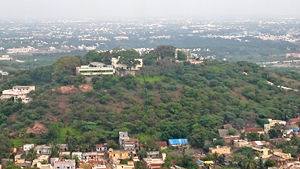



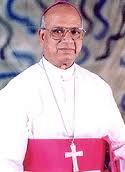









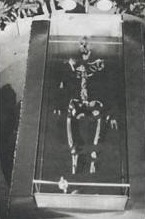

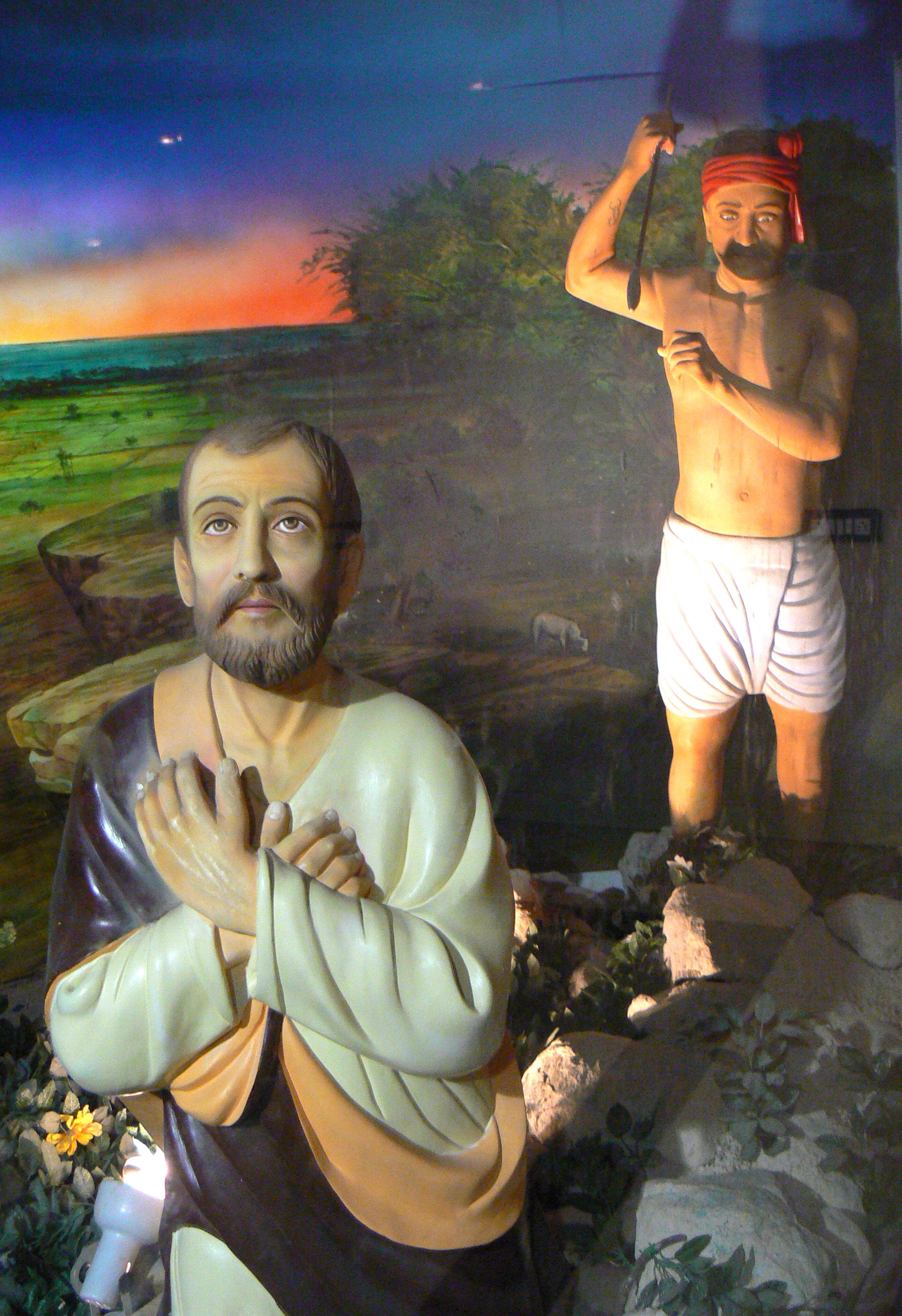


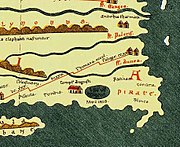









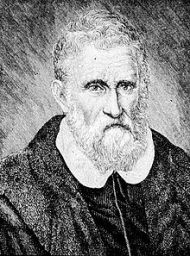



The New Indian Express Sunday Magazine, July 17, 2016, again repeats the blood libel against Hindus, that a Mylapore king and his priests killed Apostle St Thomas, in an article called. . .
Eternal Embrace of Religions – By Rathina Sankari – Published 16th July 2016 10:00 PM – Last Updated 16th July 2016 11:27 AM
Chennai, or the erstwhile Madras, lies daintily in the Coromandel Coast of the Bay of Bengal. The city, which has grown in size, is said to have originated as an English settlement around Fort St. George.
A theory states that the British acquired a three-mile strip in the fishing village of Madrasapatnam that led to the foundation of Madras, which is a metropolitan city today. It finds mention in Lonely Planet’s list of must-visit spots of 2015 and has also booked the second slot in National Geographic’s top 10 food cities list.
But not long ago when Madras never existed, thrived a settlement called Mylapore in the confines of the current Tamil Nadu capital. It is said that Mylapore is 2,000 years older than Madras. The area has been referred to by Greek geographer Ptolemy as Milarpha, while Marco Polo called it a “little town”. The region attracted Roman traders who arrived to buy silk, cotton and spices. Mylapore derives from Tamil word mayil and Pore means ‘abode of peacocks’.
Legend has it that one day Lord Shiva was narrating a tale to his wife Parvati at Kailash. Parvati was distracted as she saw a peacock dancing around the garden. Noticing her lack of interest, Shiva cursed her that she would be born as a peacock on Earth. Goddess Parvati prayed to Lord Shiva in the form of a peacock here, hence the name. Walk into Mylapore, the cultural nucleus of Madras, and you will notice that life revolves around the Kapaleeswarar Temple. Not more than 300 years old, the original temple is beleived to have existed closer to the shore even before the Portuguese arrived. The temple at Mylapore was rebuilt using the remnants of the original temple after it was destroyed. Women are seen in nine yards with jasmine flowers adorning their hair and men clad in traditional veshti (unstitched cloth) walking around here.
Marriage dates and sacred ceremonies are fixed in the temple. Match-making, meeting the girl and her family, cultural events and other social gatherings take place here. Built on the rational of Agama Shastra, the temple houses the dhwajastambha (flag staff), which is hoisted during the festive season. The dhwajastambha declares the godhead to the world.
A short auto-rickshaw ride from the Kapaleeswarar Temple would take you to the San Thome Church, one of the three Basilicas in the world, which was built over the tomb of Jesus’s apostle. The other two are St. Peter’s Basilica in Rome and church of St. James the Great in Santiago de Compostela, Spain. Of the 12 apostles to Jesus, Saint Thomas (or Doubting Thomas), was one. He sailed to the Malabar Coast of India in 52 AD to spread the word of Jesus and reached Mylapore in 68 AD.
The missionary was often found at St. Thomas Mount, preaching Christianity. In 72 AD, he was martyred and his remains were buried where San Thome Cathedral Basilica stands today.
In 1522, the Portuguese moved the Apostle and what remains today in the church. But there is more to this church than what meets the eye. Inside, you will find Jesus standing on a lotus flanked by peacocks, while Mother Mary is clad in a sari. At the church’s entrance is a 60-foot tall dhwajastambha soaring into the sky. The peacock, lotus and dhwajastambha are identities of a Hindu temple. A church is the last place that one can find these hallmarks, but it looks as if Hindu traditions had rubbed shoulders with the likes of Christianity here in the ancient locality of Madras and had left its imprints in this religious house.
[Ishwar Sharan has replied to this post on The New Indian Express website but the reply has been withheld from public view by the newspaper’s editors.]
The following note has been sent to Rathini Sankari at (rathinasankari@gmail.com):
ॐ
Madam,
If you want to write about the misogynist Christian apostle St Thomas, then have the courage (and ethics) to tell the truth.
Your piece in The New Indian Express Sunday Magazine (July 17th) was a pack of lies, a disgrace.
You should be ashamed. Don’t you know that Christian mythology is not the same as Indian history?
What is more troubling is that the story of St Thomas in India is a blood libel on the Hindu community. Is this really what you want to convey to your readers?
St Thomas in India references are here and here. Your article is reproduced on my website here.
Ishwar Sharan
Thank you for the update.
It is true that the Portuguese planted the “bleeding” cross on Big Mount and then “discovered ” it. It is also true that the former archbishop of Madras-Mylapore, Arulappa, has stated in his book “Punitha Thomayar” that a stone yantra was found in the foundations of the temple the Portuguese destroyed before building the church.
However, the origins of the “bleeding” cross is not clear. There are a number of these stone crosses, two or three, in the Kerala St. Thomas churches that were build by Syrian Christian (Nestorian) immigrants from Persia in the 7th, 8th, and 9th centuries. These crosses may be related or even have the same author.
As all these “St. Thomas” churches, in Kerala and Madras, have been built on Hindu temples destroyed by Christians, it is very possible that the “St. Thomas” crosses were created out of the yantra stones set in the temple foundations.
I have handed over 180 pages of my second book in Tamil with many photographs, “Thomas Kattukkathai Thodargirathu” (“The Thomas Myth Continues”) duly copied on CD to two organizations: Ram Trust, Tutucorin and Dravida Sanroor Peravai, nearly more than a year ago, but I do not know what has happened to it! In this book I have explained how these “bleeding-cross”, paintings, and other things have been manufactured, etc.
Anyway, here about the so-called bleeding cross, I would like to point out that these crosses might have been planted here and the inscription shown chiselled afterwards, thus appearing fresh and bright.
In fact, it is not all a cross, but an Yantra vouchsafed by Arualappa himself in his book as has already been pointed out by me in my earlier book. When the Portugese destroyed a temple on the Mount, they found this stone yantra beneath it along with other items. Then to cook up their myth, inscription was added.